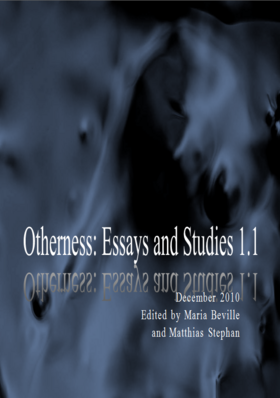
This journal issue, the first in its series, is a collection of articles that have been developed from inter-institutional seminar sessions on the topic of Otherness that took place in both Mary Immaculate College and Aarhus University over the last two academic years. This series brought together scholars from a number of different institutions who discussed and examined, from different perspectives in the arts, the very relevant and pertinent topic of alterity. The wide range of approaches to otherness in the series offered a dynamic, convergent and novel picture of otherness and its various representations (and sometimes unrepresentations). As such, the aim of the journal is to maintain this very important research avenue; keeping it open and active. We aspire, primarily, to offer a forum for future debates on otherness, which we view as a topic that can only benefit from a multilateral and dialogical approach and so we particularly appreciate dynamic cross-disciplinary study.
Otherness is in many ways, a slippery and difficult term. A contradiction is apparent whereby the very process of naming the other, whether in specific or generalized terms, is bound by the simultaneous disappearance of the concept. More than just simply a result of a linguistic deferral of ‘meaning’, this situation is an effect of the fact that the very nature of alterity is impossible without the idea of sameness. Other and self are inherently joined and so when we ‘speak’ of otherness, we inevitably ‘speak’ of its other: selfhood. In spite of this, otherness is generally conceived of as that which is not ‘self’. We feign that there must be a dividing line somewhere between and not outside the two and as such the relationship between other and self is inevitably problematic and complex. It is this relationship and its cultural representations that we engage with in our research. We seek to pose questions and problems that relate this relationship to otherness with similar questions and problems in the areas of philosophy, literature, cultural theory, theology, linguistics, art, psychology, and the political sciences.
Whether a relationship defined by fear, hostility and struggles for domination, or by independence, representation and hospitality, polarity in the lexis of otherness consistently arises. ‘Sameness’ and ‘difference’ belong to a long standing process of social, cultural and political ‘othering’, that has been pivotal to the development of the arts. As a timeless concept and a traditional point of intersection between theoretical discourses including postcolonialism, deconstruction, Marxism, feminism and many more besides, it now extends to connect such areas to contemporary discussions of socio-politics and the problems faced in our rapidly changing and increasingly globalised, yet localised, world. In this context, important questions must be framed: how can we find a way to co-exist with and relate to the other? how can we to negotiate cultural identity? how are we to ethically conceive of the other at all? And, how can the encounter with otherness be accurately represented?
The articles in this issue each offer their own individual discussions of otherness at the point of intersection in contemporary academic discourse where alterity is subtly concentrated and ask significant questions of their own. Our contributors engage with issues including fear of otherness: the monstrous, the uncanny and the cannibal; literary and philosophical explorations of otherness; and the issue of globalisation and the necessarily changing face of education. Questions raised include: can cannibalism serve as an appropriate metaphor for the fear of the other that underlies the competing aspects of western capitalism? Are self-other relations mirrored in the contemporary tension between the local and the global and can these be ameliorated by new approaches to teaching at secondary level? Can the paradox of racial difference, in which otherness is both visible and invisible be examined acutely through the tropes of Gothic fiction? What are the cognitive processes that propel the experience of disgust and abjection in relation to the monstrous other? Can a rethinking of the representation of trauma in fiction contribute to a formulation of ethics that avoids processes of othering? In Joyce’s stream of consciousness writings, might we find a model for a reconnection of the divided self; the inner and outer world? Also, in his novel, Ulysses, with its complex presentation of gender identity, may we find a model for the deconstruction of traditional gender constructions? On a different note, can music, as represented in John Carney’s film Once, allow us to share a sense of difference with the other that extends beyond the realms of language and national cultures?
These articles and the issues that they formulate and discuss interrogate and reformulate the idea of otherness in important ways. We hope that by combining various perspectives on otherness in this issue, we achieve a multilateral focus that will contribute to ongoing discussion and debate.